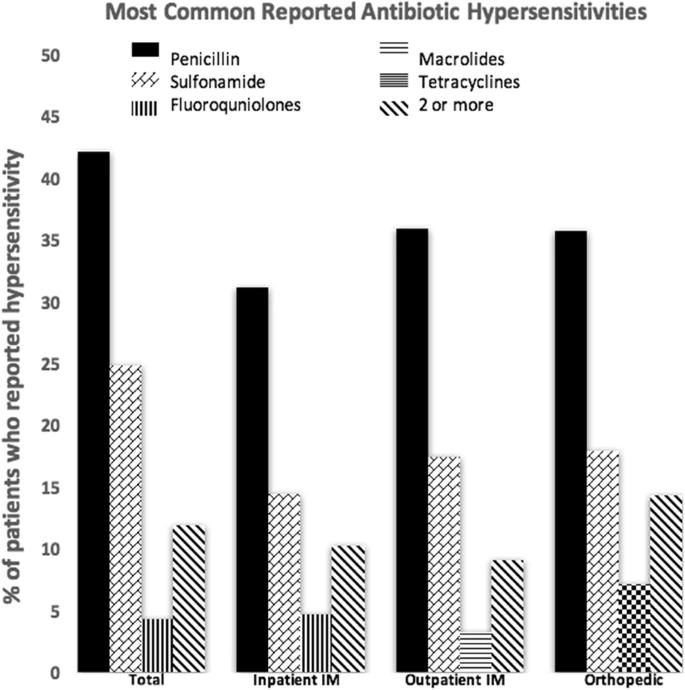- Research
- Open Access
- Allergy, Asthma & Clinical Immunology
Abstract
Background
Studies have shown the discrepancy between self-reported antibiotic allergies and true allergies. Inaccurate reporting of antibiotic hypersensitivities can limit treatment options and result in use of more expensive antibiotics and contribute to resistance.
Methods
This retrospective cohort chart review obtained data on 16,515 patients after obtaining IRB approval. Patients who had an antibiotic adverse reaction were identified, recorded, and their management reviewed. 7926 patients were selected from inpatient internal medicine clinics, 8042 patients from outpatient internal medicine clinics, and 547 from orthopedic clinics.
Results
The prevalence of reported antibiotic sensitivity in our study was 9.89% (n = 1624). Reported antibiotic sensitivity was 8.88% (n = 704) in inpatient settings as compared to 11.2% (n = 902) and 5.12% (n = 28) in medicine and orthopedic outpatient settings respectively. The top five antibiotic adverse reactions reported were penicillins (42%), sulfonamides (25%), fluoroquinolones (4.3%), tetracyclines (4.2%), and macrolides (3.5%). In all settings, penicillins and sulfonamides adverse reactions were the top two reportings. 11.88% (n = 193) of patients with reported adverse reactions reported sensitivities to multiple antibiotics.
Conclusion
Our study demonstrated high prevalence of reported antibiotic sensitivity in three clinical settings. However, a significant portion of these patients may not be truly hypersensitive to these antibiotics. There is a need for increased awareness among medical professionals about the importance of detailed history taking and management of self-reported antibiotic allergies to combat unnecessary use of antibiotics.

No comments:
Post a Comment